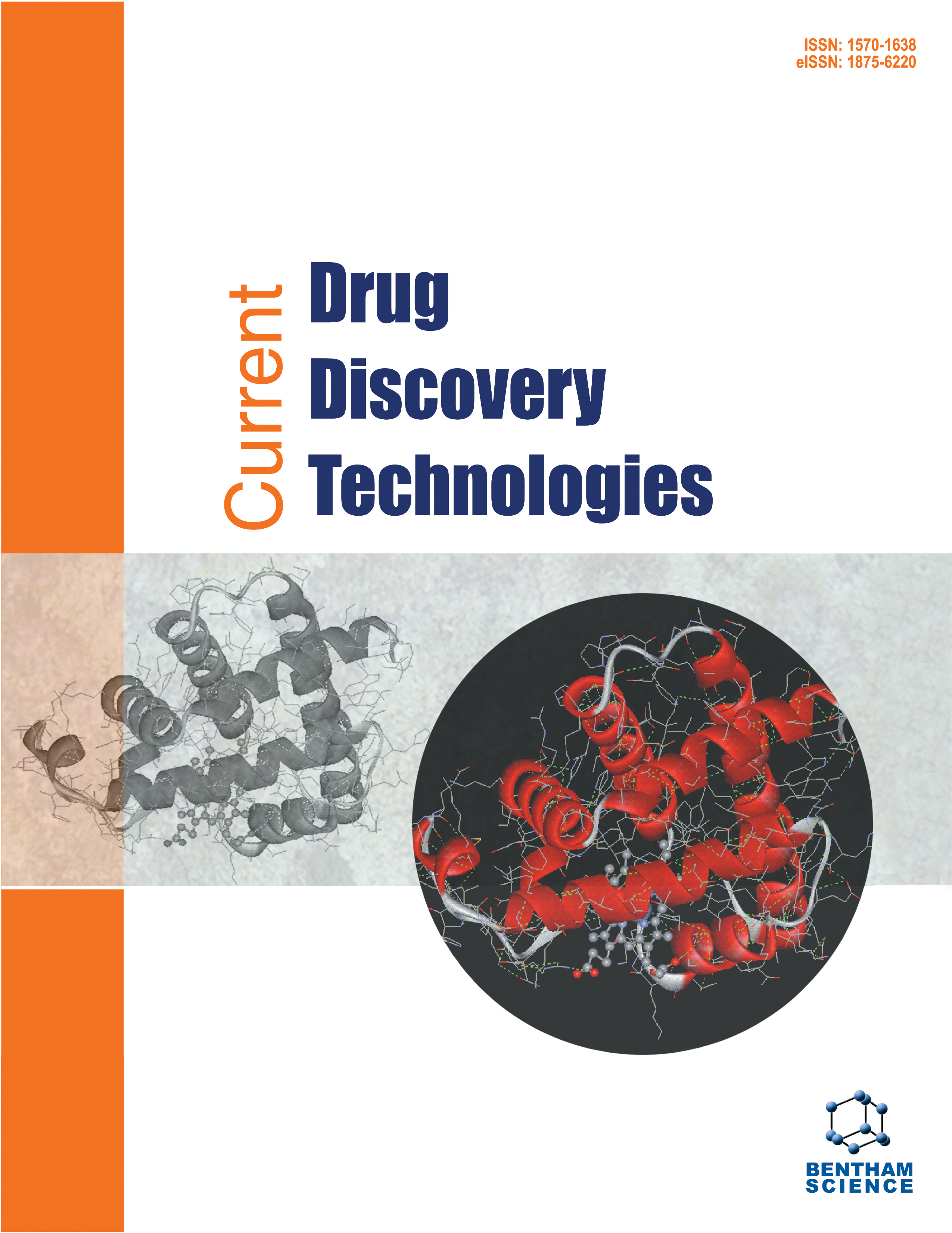- Home
- A-Z Publications
- Current Drug Discovery Technologies
- Previous Issues
- Volume 9, Issue 3, 2012
Current Drug Discovery Technologies - Volume 9, Issue 3, 2012
Volume 9, Issue 3, 2012
-
-
Crosslinked, Polymerized, and PEG-Conjugated Hemoglobin-Based Oxygen Carriers: Clinical Safety and Efficacy of Recent and Current Products
More LessAuthors: Jonathan S. Jahr, Arezou Sadighi Akha and Randall J. HoltbyBlood substitutes, especially hemoglobin based oxygen carriers (HBOC) have been widely studied and reviewed over the past 30 years. The development of HBOCs was highlighted by crosslinking to minimize adverse effects. However, even early attempts at single crosslinking using alpha-alpha crosslinks or diaspirin crosslinking failed clinical trials due to renal morbidity and increased mortality. In fact, preclinical trials Read More
-
-
-
Microcirculation and NO-CO Studies of a Natural Extracellular Hemoglobin Developed for an Oxygen Therapeutic Carrier
More LessExtracellular soluble hemoglobins (Hbs) have long been studied for their possible use as safe and effective alternatives to blood transfusion. While remarkable progress has been made in the use of cell-free Hb as artificial oxygen carrier, significant problems remain, including susceptibility to oxidative inactivation and propensity to induce vasoconstriction. Hemarina-M101 is a natural giant extracellular hemoglobin (3600 kDa) Read More
-
-
-
ATP-Adenosine-Glutathione Cross-Linked Hemoglobin as Clinically Useful Oxygen Carrier
More LessAuthors: Jan Simoni, Grace Simoni, Donald E. Wesson and Mario FeolaTo attenuate hemoglobin's (Hb) intrinsic toxicity, Texas Tech University scientists developed a novel concept of “pharmacologic cross-linking” to formulate an effective oxygen carrier, HemoTech, which consists of purified bovine Hb cross-linked intramolecularly with ATP and intermolecularly with adenosine, and conjugated with reduced glutathione (GSH). In this composition, while ATP prevents Hb dimerization, adenosine per Read More
-
-
-
Present Situation of the Development of Cellular-Type Hemoglobin-Based Oxygen Carrier (Hemoglobin-Vesicles)
More LessBy Hiromi SakaiMany researchers have tested a hemoglobin (Hb) solution as a possible oxygen carrier after discovering that one Hb molecule contains four hemes that bind and release oxygen reversibly, and that blood type antigens are expressed on the surface of red blood cells (RBCs). However, various side effects emerged during the long development of Hbbased oxygen carriers (HBOCs). The physiological significance of the RBC structure i Read More
-
-
-
Adverse HBOC-Endothelial Dysfunction Synergism: A Possible Contributor to Adverse Clinical Outcomes?
More LessAdverse outcomes in clinical trials on Hemoglobin Based Oxygen Carriers (HBOCs) appear to have occurred more frequently in HBOC treated than in control treated subjects. The differential may be related to many factors, including study complexity and compliance issues. Adverse outcomes also appear to be related to chronic comorbidities in subjects undergoing elective surgery. Frequently occurring comorbidities in these p Read More
-
-
-
Systems Biology of HBOC-Induced Vasoconstriction
More LessBy Chi-Ming HaiVasoconstriction is a major adverse effect of HBOCs. The use of a single drug for attenuating HBOC-induced vasoconstriction has been tried with limited success. Since HBOC causes disruptions at multiple levels of organization in the vascular system, a systems approach is helpful to explore avenues to counteract the effects of HBOC at multiple levels by targeting multiple sites in the system. A multi-target approach is especia Read More
-
-
-
Practical Considerations in the Development of Hemoglobin-Based Oxygen Therapeutics
More LessAuthors: Hae Won Kim and Timothy N. EstepThe development of hemoglobin based oxygen therapeutics (HBOCs) requires consideration of a number of factors. While the enabling technology derives from fundamental research on protein biochemistry and biological interactions, translation of these research insights into usable medical therapeutics demands the application of considerable technical expertise and consideration and reconciliation of a myriad of manufactu Read More
-
-
-
Hemoglobin Encapsulated Poly(Ethylene Glycol) Surface Conjugated Vesicles Attenuate Vasoactivity of Cell-Free Hemoglobin
More LessAuthors: Pedro Cabrales, Shahid Rameez and Andre F.PalmerWidespread clinical use of acellular hemoglobin (Hb)-based O2 carriers (HBOCs) has been hampered by their ability to elicit both vasoconstriction and systemic hypertension. This is primarily due to the ability of acellular Hb to extravasate through the blood vessel wall and scavenge endothelial-derived nitric oxide (NO). Encapsulation of Hb inside the aqueous core of liposomes retards the rates of NO dioxygenation and O2 releas Read More
-
Volumes & issues
-
Volume 22 (2025)
-
Volume 21 (2024)
-
Volume 20 (2023)
-
Volume 19 (2022)
-
Volume 18 (2021)
-
Volume 17 (2020)
-
Volume 16 (2019)
-
Volume 15 (2018)
-
Volume 14 (2017)
-
Volume 13 (2016)
-
Volume 12 (2015)
-
Volume 11 (2014)
-
Volume 10 (2013)
-
Volume 9 (2012)
-
Volume 8 (2011)
-
Volume 7 (2010)
-
Volume 6 (2009)
-
Volume 5 (2008)
-
Volume 4 (2007)
-
Volume 3 (2006)
-
Volume 2 (2005)
-
Volume 1 (2004)
Most Read This Month
Article
content/journals/cddt
Journal
10
5
false
en


